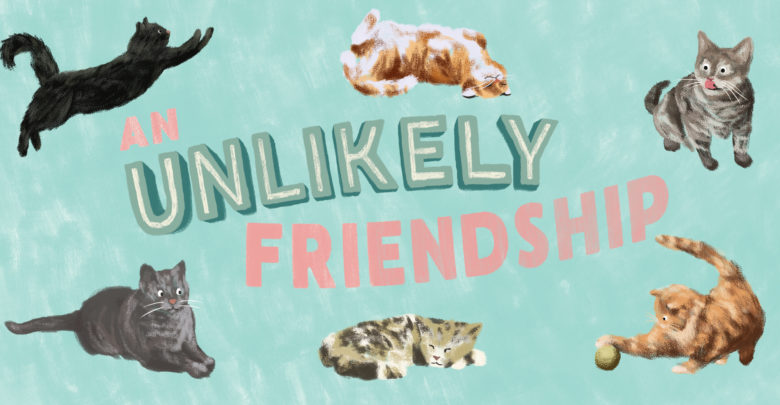 Kathy Milanowski
Kathy MilanowskiWhen I was in my second year of my undergraduate degree, I decided to get a pet. I went to various shelters looking at many different cats and kittens of all colours and ages. For me, it was important that whichever cat I adopted was suitable to live with me and had the right personality. I kept going back to the Edmonton Humane Society to see one particular kitten: a grey one with stripes and a white belly.
She was often alone in her cage and whenever another kitten did enter her space, she would get attacked. I picked her up and she instantly started to purr and lick me — a complete departure from all the other kittens I saw in those couple of months. It would usually take some time for them to warm up to me or they were indifferent to my presence. I’ve had her for two and a half years now and her name is Kida.
In my opinion, Kida and I were meant to be (however, I may be delusional). Nevertheless, this got me thinking about the history of humanity’s relationship with cats.
According to an article by National Geographic, cats lived alongside humans for centuries before domestication. The household cat actually comes from two major cat lineages. One of these ancestors spread from southwest Asia into Europe as early as 4400 B.C. Mice and rats were attracted to crops and human agriculture; as a result, cats followed the rodent population, which meant they frequented human civilization often.
The second lineage consists of African cats from Egypt that migrated at the beginning of 1500 B.C. into the Mediterranean and the Old World. These cats had a certain level of sociability and tameness that humans desired. As a way to control the rodent population on travel and sea routes humans brought along these Egyptian cats. Funnily enough, cats haven’t evolved much from their forefathers — genetically, that is.
However, the usefulness of cats as rodent control may be over-exaggerated. In an interview done by The Cut, journalist and author of The Lion in the Living Room: How Cats Tamed Us and Took Over the World, Abigail Tucker, stated that “cats are uniquely ill-suited for domestication.” This is because humans first set out to domesticate animals that can be easily confined and eat a variety of things, like pigs or goats. Meanwhile, cats can only eat meat that humans eat and don’t like confinement. Unlike dogs and cattle, cats don’t have social hierarchies and don’t have lead animals — we can control dogs and cattle by acting like an alpha dog or the lead steer, but this doesn’t work on cats.
Additionally, cats are great hunters, but they rarely follow instructions well enough. Tucker gives the Rabbit Suppression Act of 1884 in colonial Australia as evidence of cats’ inability to control the rabbit population and, consequently, the reason why they’re horrible for pest control. In this event, both the British and the Australians released house cats to deal with hoards of rabbits at the same time. Instead of killing off the rabbits, the cats started killing off small, local animals, because, well, rabbits breed like rabbits and there were too many to kill. Cats just ended up killing more convenient and easy prey.
So why do we even own cats? For Tucker, she believes that humans kept cats mainly because they remind us of human babies — a small nose, large head, and big eyes are all cute characteristics humans are attracted towards. Although Tucker diminishes the social and emotional aspects of human-cat bonds as being detrimental and leading to more social isolation, I personally disagree. In a society where we value long workdays and constant productivity, we are already isolated and we lack the energy or time to socialize with others. Contrary to popular opinion, cats, both wild and domestic, need love and affection.
There’s been a fair amount of research on felines and their feelings for humans. For example, a study conducted in 2007 looked at the attachment between owners and cats. A cat was placed in a room and experienced being alone, being with a stranger and being with their owner. They found that cats would explore their surroundings when their owner was in the room, indicating that the cat was more comfortable in the presence of their owner. The cats spent more time head-butting, following, and playing with their owners than with the stranger. While with the stranger, cats were more alert and would normally sit by the door waiting for their owners. As a result, there is likely some form of attachment between a cat and their owner.
Although everyone’s experience with cats is different and each cat is different, we can agree they make a difference in all of our lives. I think now we, as a community, aren’t so concerned with a cat’s hunting abilities, but more so the joy they can bring. Regardless of Kida’s lack of ability to kill animals properly, I still value her for how much comfort and love she brings me. Kida has made a tremendous difference in my life, she’s always so happy when I come home and it always brightens up my day!




